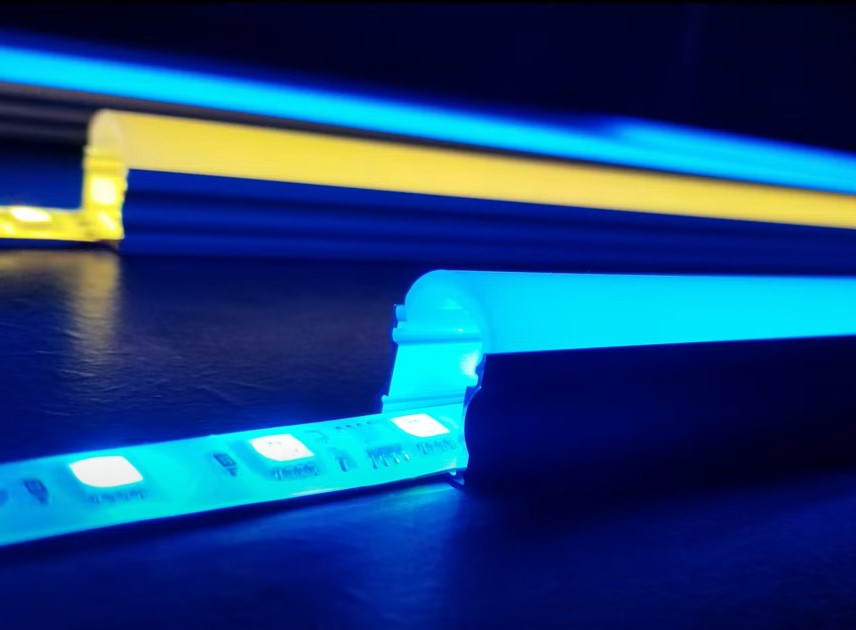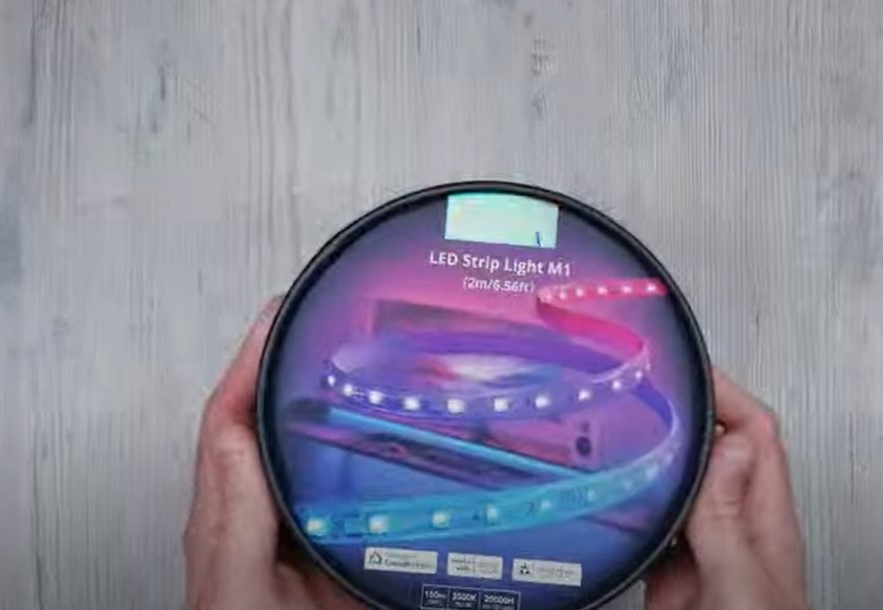Aesthetic & Excellent Cool LED Light Room Ideas
Want to create a truly stunning and personalized atmosphere in your home? Lighting plays a crucial role in setting the mood and ambiance of any room. This comprehensive guide explores the exciting world of cool LED light room ideas, showcasing various techniques, styles, and technologies to help you achieve the perfect illumination for your space….
Want to create a truly stunning and personalized atmosphere in your home? Lighting plays a crucial role in setting the mood and ambiance of any room. This comprehensive guide explores the exciting world of cool LED light room ideas, showcasing various techniques, styles, and technologies to help you achieve the perfect illumination for your space. We’ll delve into different LED types, explore creative lighting setups, and discuss how to optimize your lighting for specific moods and activities. Get ready to discover how to transform your rooms with the power of LED lighting!
LEDs, or Light Emitting Diodes, are semiconductor devices that convert electricity into light. Unlike incandescent bulbs which produce light through heat, LEDs generate light directly, making them significantly more energy-efficient and longer-lasting. They also come in a wide variety of colors and
brightness levels, offering unmatched versatility for interior design.
Cool LED Light Room Ideas
Types of LEDs for Home Use

The market offers several LED types, each with its strengths: RGB LEDs allow for a spectrum of colors, while warm white LEDs provide a cozy ambiance. Cool white LEDs offer brighter, more functional illumination, perfect for task lighting. LED strips are highly flexible and perfect for accent lighting, while LED panels offer even, diffused light.
Why Choose LED Lighting?
LEDs are the future of home lighting due to their energy efficiency, long lifespan (lasting up to 50,000 hours), and diverse color options. They produce less heat than traditional bulbs, leading to lower energy bills and a cooler home environment. Their durability reduces the frequency of bulb replacements, saving both time and money.
Cool LED Room Lighting Ideas
Ambient Lighting: Setting the Mood
Ambient lighting provides general illumination, establishing the overall atmosphere. Consider using recessed LED lights in the ceiling for even, soft light. Alternatively, strategically placed floor lamps with warm-white LEDs can create a cozy and inviting space. Dimmers are essential for controlling the brightness and tailoring the mood.
Accent Lighting: Highlighting Features
Accent lighting focuses on specific areas or objects, drawing attention to architectural details or artwork. LED strip lights tucked under cabinets, behind shelves, or along crown molding can dramatically enhance the visual appeal of a room. Consider using color-changing RGB LEDs for a dynamic and customizable experience.
Task Lighting: Illuminating Specific Activities
Task lighting provides focused illumination for specific activities, such as reading or working. Desk lamps with adjustable arms and bright cool-white LEDs are ideal for workstations. Under-cabinet lighting in kitchens illuminates countertops for food preparation, while reading lights beside beds improve nighttime visibility.
Creative Lighting Setups with LEDs

Color-Changing LED Systems
Smart LED systems allow you to control the color and brightness of your lights using a smartphone app or voice commands. These systems offer incredible flexibility, letting you change the ambiance of your room with a few taps or voice commands. Popular brands often include features like scheduling and automated scenes.
LED Strip Lights: Endless Possibilities
LED strip lights are incredibly versatile and can be used to create unique lighting effects. They’re perfect for backlighting furniture, creating cove lighting, or highlighting architectural features. Their flexibility allows for installation in tight spaces, adding a touch of creativity to any room.
DIY LED Projects: Unleash Your Creativity
Numerous online tutorials guide you through creating DIY LED projects, from simple bedside lamps to complex light installations. With a little patience and skill, you can personalize your lighting schemes and create truly unique designs. This is a great way to save money and showcase your individuality.
Benefits of LED Lighting

Energy Efficiency & Cost Savings
LEDs consume significantly less energy than traditional incandescent bulbs, translating to lower electricity bills and a smaller carbon footprint. This is a considerable long-term benefit, especially in homes with extensive lighting needs.
Longevity & Reduced Maintenance
LEDs boast a remarkably long lifespan, reducing the need for frequent bulb replacements. This eliminates the hassle and cost associated with purchasing and installing new bulbs, freeing up time and resources.
Versatility & Design Options
LEDs are available in a vast range of colors, styles, and brightness levels, offering unparalleled design flexibility. They can seamlessly integrate into any interior design scheme, from minimalist to maximalist, allowing for personalized expression.
Limitations of LED Lighting
Initial Cost
While LEDs offer significant long-term cost savings, their upfront cost can be higher than traditional bulbs. However, the long lifespan and energy efficiency quickly offset this initial investment.
Heat Sensitivity
Although LEDs produce less heat than incandescent bulbs, they are still sensitive to excessive heat. Proper ventilation and installation are crucial to prevent overheating and premature failure.
Color Rendering Index (CRI)
The CRI measures how accurately a light source renders colors. While many LEDs have a high CRI, some lower-quality options may produce less accurate color reproduction. Always check the CRI value before purchasing LEDs.
Selecting the Right LEDs for Your Room
Choosing the Right Color Temperature
LEDs are categorized by color temperature, measured in Kelvin (K). Lower Kelvin values (2700K-3000K) represent warmer, more yellowish light, ideal for living rooms and bedrooms. Higher values (5000K-6500K) represent cooler, bluer light, suitable for kitchens and bathrooms.
Understanding Lumens and Brightness
Lumens measure the brightness of a light source. Higher lumens indicate brighter light. Consider the size of your room and the desired brightness level when choosing LEDs. A larger room will require more lumens for adequate illumination.
Considering the CRI (Color Rendering Index)
A higher CRI (closer to 100) indicates more accurate color reproduction. For rooms where color accuracy is important, such as art studios or kitchens, choose LEDs with a high CRI. Lower CRI values may wash out colors, making them appear dull or muted.
Installing LED Lighting
Safety Precautions
Always turn off the power before working with any electrical components, including LED lights. Consult a qualified electrician if you’re unsure about any aspect of the installation process. Improper installation can lead to electrical hazards.
Installation Methods
LEDs can be installed in various ways, including recessed lighting, surface mounting, or track lighting. The chosen method will depend on the type of LED and the desired aesthetic. Follow the manufacturer’s instructions carefully during installation.
Troubleshooting Common Issues
If your LEDs fail to function correctly, check the wiring connections and ensure the power is on. If the problem persists, consult the manufacturer’s troubleshooting guide or contact a qualified electrician.
Comparing LED Lighting Options
LED Bulbs vs. LED Strips
LED bulbs are a direct replacement for traditional light bulbs, offering easy installation and a wide range of options. LED strips provide greater flexibility and creative possibilities, but require more technical installation.
Smart LEDs vs. Traditional LEDs
Smart LEDs offer advanced control features through smartphone apps or voice assistants, enhancing convenience and customization. Traditional LEDs provide reliable illumination at a lower cost, but lack the advanced features of smart LEDs.
Different Brands and Their Features
Several reputable brands offer high-quality LED lighting solutions, each with unique features and price points. Research and compare different brands to find the best option for your needs and budget.
Choosing the Right LED Lights for Different Rooms
Living Room LED Lighting Ideas
Create a warm and inviting atmosphere in your living room with warm-white LEDs and dimmers. Use accent lighting to highlight artwork or architectural details. Consider incorporating floor lamps and table lamps for a layered lighting scheme.
Bedroom LED Lighting Ideas
Opt for soft, warm-white LEDs in the bedroom to promote relaxation and sleep. Install bedside lamps with adjustable brightness for reading. Consider using color-changing LEDs for a personalized sleep environment.
Kitchen LED Lighting Ideas
Use bright, cool-white LEDs in the kitchen for optimal task lighting. Install under-cabinet lighting to illuminate countertops. Consider using recessed lighting for general illumination.
Creating Ambiance with LED Lighting
Using Color Psychology in Lighting Design
Different colors evoke different emotions. Warm colors (reds, oranges, yellows) create a cozy and intimate atmosphere, while cool colors (blues, greens, purples) promote calmness and relaxation. Use color psychology to create the desired mood in your room.
Setting the Right Brightness Levels
The brightness of your lighting affects the overall ambiance. Bright lights create a more energetic and stimulating atmosphere, while dimmer lights promote relaxation and calmness. Use dimmers to control the brightness and adjust the mood as needed.
Layering Lighting for a Complete Effect
Layering lighting involves using multiple light sources at different brightness levels to create depth and dimension. Combine ambient, accent, and task lighting to achieve a well-balanced and aesthetically pleasing lighting scheme.
Frequently Asked Questions
What is the lifespan of an LED bulb?
LED bulbs typically last 25,000 to 50,000 hours, significantly longer than incandescent or CFL bulbs.
How much energy do LEDs save?
LEDs use up to 75% less energy than incandescent bulbs, resulting in substantial cost savings over their lifespan.
Are LEDs dimmable?
Many LEDs are dimmable, but it’s crucial to ensure compatibility between the LED bulb and the dimmer switch. Check the packaging for dimmability information.
How do I choose the right color temperature for my room?
Consider the room’s function and desired atmosphere. Warmer temperatures (2700-3000K) are suitable for relaxing spaces, while cooler temperatures (5000-6500K) are better for task-oriented areas.
What is the difference between lumens and watts?
Watts measure power consumption, while lumens measure brightness. Focus on lumens when selecting LEDs to ensure adequate illumination.
Can I install LEDs myself?
For simple bulb replacements, yes. For more complex installations, such as recessed lighting or LED strips, it’s best to consult a qualified electrician.
Final Thoughts
Transforming your space with cool LED light room ideas is a rewarding process that can significantly enhance your home’s ambiance and functionality. From setting the perfect mood to illuminating specific tasks, LEDs offer unmatched versatility and energy efficiency. By understanding the different types of LEDs, exploring various installation methods, and considering the unique characteristics of each room, you can create a lighting scheme that truly reflects your personal style and preferences. Remember to consider factors like color temperature, lumens, and CRI to achieve optimal illumination. Embrace the possibilities, experiment with different designs, and let your creativity shine. Don’t hesitate to explore the numerous resources available online and in stores to find the perfect LED lighting solutions for your home. The possibilities are truly endless, so unleash your creativity and enjoy the beauty of well-designed LED lighting!

